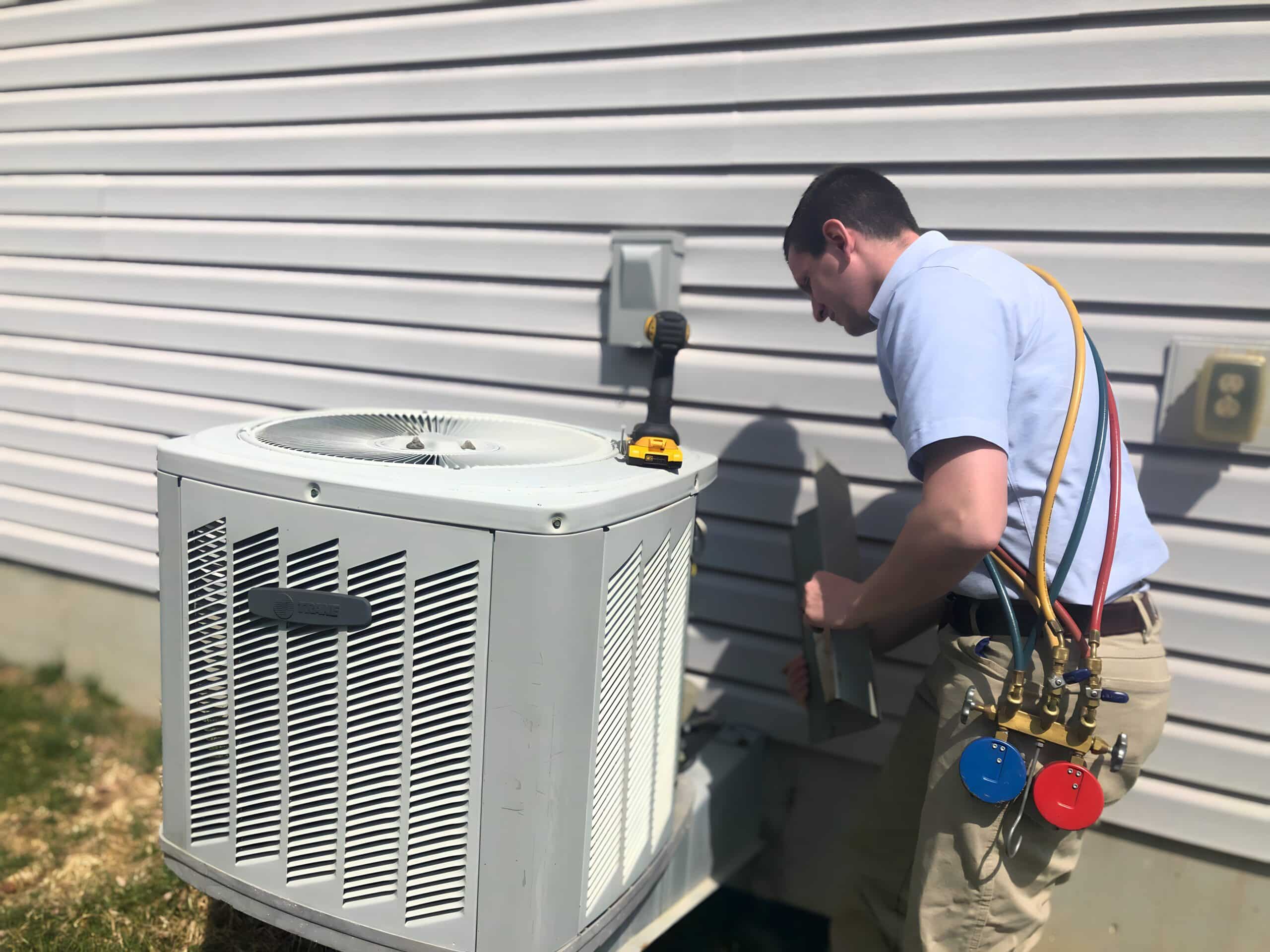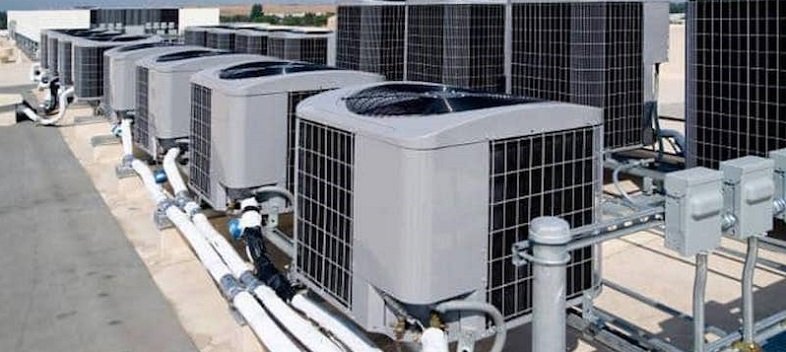How ductless mini splits Compare to Traditional HVAC Systems
How ductless mini splits Compare to Traditional HVAC Systems
Blog Article
Exactly How a Heat Pump and Heater Interact to Optimize Your Home's Home heating Efficiency
Understanding how a heat pump and furnace job with each other is essential for home owners looking for efficient home heating options. Each system has its staminas, providing a well balanced method to home comfort. The heatpump masters modest temperature levels, while the furnace delivers fast warmth throughout extreme cold. This harmony not only minimizes energy prices but additionally improves the life-span of both home appliances. What factors affect this collaboration, and just how can property owners optimize their benefits?
Understanding Warmth Pumps: How They Function
Although lots of people might be unfamiliar with their internal operations, heatpump play an essential function in modern-day heater. These gadgets run by moving heat from one place to another, making use of the principles of thermodynamics. In cooler months, a heat pump essences warm from the outdoors air, ground, or water, and transfers it inside to warm the space. Alternatively, during warmer months, it can reverse the process, functioning as an ac unit by removing warm from inside to the outside.Heat pumps include an evaporator, growth, condenser, and compressor valve. The refrigerant within the system takes in warm as it evaporates at low temperatures and pressures. The compressor then raises the pressure and temperature of the cooling agent, allowing it to release heat as it condenses. This efficient procedure can substantially reduce energy consumption contrasted to traditional heating methods, making heatpump a lasting selection for environment control in homes.
The Role of Heating Systems in Home Home Heating
Furnaces play a necessary duty in home heating by giving a reliable resource of heat during the colder months. They run by creating warmth via burning or electrical resistance, dispersing it throughout the home using air ducts or glowing systems. The efficiency of a heater is usually gauged by its Yearly Fuel Usage Effectiveness (AFUE) score, which suggests exactly how effectively the device transforms fuel right into heat.Furnaces can use various power sources, consisting of natural gas, electrical energy, propane, or oil, permitting home owners to select one of the most appropriate alternative for their requirements. Unlike warm pumps, which may battle in severe chilly, furnaces maintain regular performance, making certain that indoor temperatures remain comfy despite outside problems. Furthermore, modern-day furnaces often come outfitted with innovative innovation, such as variable-speed blowers and smart thermostats, enhancing their effectiveness and responsiveness. This versatility makes heating systems a crucial component in all-inclusive home heating strategies.

Benefits of Making Use Of Both Equipments Together
Integrating the strengths of both heating systems and heatpump can lead to a more effective and reliable home heating option. Utilizing both systems enables property owners to capitalize on the warmth pump's power efficiency during milder temperatures while counting on the furnace for more extreme cold conditions. This dual approach can considerably lower energy prices, as heatpump consume much less electricity than conventional home heating approaches when temperature levels are moderate.Additionally, using both systems with each other can enhance convenience levels in the home. Heatpump can give consistent, also home heating, while furnaces can swiftly raise ambient temperature levels when needed. Additionally, the combination of both systems can extend the life-span of devices by minimizing wear and tear on each unit, as they share the work. Ultimately, home owners can delight in a well balanced, cost-efficient home heating option that adjusts perfectly to varying weather condition problems, ensuring a warm and inviting home throughout the cold weather.
How Warm Pumps and Furnaces Complement Each Various Other
When property owners integrate warmth pumps and heating systems, they create a complementary furnace that makes the most of performance and convenience. Warmth pumps operate by moving warm from the outside air or ground, making them extremely efficient in moderate environments. They succeed during milder temperatures, supplying cost-effective home heating. On the other hand, heating systems produce heat through burning or electric resistance, supplying solid, prompt heat during severe cool conditions.The combination of these two systems permits dynamic modifications based upon temperature changes. During warmer months or milder winter days, the heat pump can take the lead, saving power and decreasing prices. As temperatures decline, the heater can effortlessly engage, making sure consistent heat throughout the home. This harmony not just enhances energy use however likewise improves the life-span of both systems, as each device runs within its excellent performance range. With each other, they create a balanced setting that adjusts to differing environment needs.
Maximizing Efficiency: Tips for Homeowners
Property owners can improve their heating performance via a number of functional strategies. Establishing a regular upkeep schedule, incorporating smart thermostat technology, and implementing efficient insulation and securing solutions are vital steps. These actions not only improve comfort yet likewise minimize energy prices.
Routine Upkeep Set Up
To ensure maximum home heating performance, establishing a normal upkeep schedule is necessary for any type of home. House owners should focus on routine evaluations of both heatpump and heating systems to establish peak performance. This includes altering air filters each to three months, as clogged filters can substantially reduce effectiveness. In addition, organizing professional maintenance at least yearly enables specialists to identify and attend to potential problems prior to they rise. Property owners ought to additionally cleanse the heatpump's outdoor device to stop particles build-up that can hinder airflow. By sticking to a normal maintenance timetable, house owners not only improve their heating unit' efficiency however additionally extend their life-span, causing greater convenience and minimized energy prices throughout the chillier months.
Smart Thermostat Assimilation
Integrating a wise thermostat into a home heating unit can considerably enhance power efficiency, especially as it enables accurate control over temperature setups. These devices can find out the home owner's timetable and choices, instantly adjusting the temperature to optimize comfort while reducing energy usage. They can lower home heating throughout times when the home is vacant, minimizing unnecessary usage. Several smart thermostats additionally supply real-time energy use data, Bonuses making it possible for homeowners to make informed choices concerning their heating habits. Furthermore, remote gain access to through smartphone applications enables customers to change setups from anywhere, ensuring the home is warm upon return. Generally, clever thermostat combination not only boosts comfort however significantly adds to energy financial savings and effectiveness.
Insulation and Sealing Solutions
Smart thermostats play an essential function in power efficiency, however their effectiveness can be significantly boosted by correct insulation and securing options. House owners need to focus on insulating wall surfaces, attic rooms, and floors to reduce heat loss. Premium insulation products, such as spray foam or fiberglass, can greatly boost thermal resistance. Furthermore, sealing voids around windows, air ducts, and doors prevents cool air infiltration and heat getaway. Weatherstripping and caulking are reliable techniques for dealing with these leakages - heat pump service. Routine examinations for air leaks, along with using blower door examinations, can assist determine trouble locations. By purchasing insulation and securing, home owners can enhance the performance of their heater, inevitably bring about minimized power intake and reduced energy costs
Usual Misconceptions About Warm Pumps and Furnaces
What misconceptions surround heatpump and heating systems? Lots of people wrongly think that heat pumps are inadequate in cooler climates. Actually, contemporary heat pumps are created to operate efficiently even in low temperatures, providing dependable home heating throughout winter season. Another common misconception is that heating systems are always a lot more effective than warm pumps. Nonetheless, this relies on the specific power sources and effectiveness rankings of the devices concerned. Some may likewise assume that utilizing both systems concurrently is unneeded, however actually, this combination can enhance heating efficiency, specifically during extreme climate condition. In addition, individuals usually presume that heatpump need continuous upkeep, when actually, they have similar upkeep requires to conventional heater. By unmasking these myths, homeowners can make even more educated choices regarding their heating choices, eventually bring about improved convenience and energy performance in their homes.
Maintenance Factors To Consider for Combined Solutions

Frequently Asked Inquiries
Can Heat Pumps Work Effectively in Incredibly Cold Climates?
Heat pumps can struggle in extremely cold climates due to minimized effectiveness and warmth removal restrictions. Nevertheless, developments in modern technology have caused designs designed for better efficiency in such problems, improving their feasibility in severe atmospheres.
How Much Time Do Warm Pumps and Furnaces Usually Last?
Heat pumps generally last 15 to twenty years, while furnaces have a lifespan of 15 to thirty years. Regular upkeep can extend their longevity, making certain reliable procedure and lowering the requirement for premature substitutes.

What Is the Ordinary Price of Putting Up Both Equipments?
The ordinary price of installing both a warmth pump and a furnace commonly varies between $5,000 to $10,000 - heat pump installation ooltewah tn. Variables influencing this expense include system size, setup complexity, and regional labor rates
Exist Tax Obligation Rewards for Utilizing Energy-Efficient Heating Systems?
Numerous property owners ask about tax motivations for energy-efficient furnace. Different government and state programs often supply credit histories or discounts, motivating the adoption of sustainable technologies to decrease power intake and advertise ecological responsibility.
Just how Do I Pick the Right Dimension Heat Pump and Furnace?
Choosing the best size heatpump and heating system entails calculating the home's square video, top article thinking about insulation quality, and evaluating neighborhood environment. Consulting a professional can ensure perfect system performance and energy performance based on specific needs. heat pump service. Comprehending how a warmth pump and heater work with each other is essential for house owners seeking reliable home heating services. In chillier months, a warm pump extracts warmth from the outside air, ground, or water, and transfers it inside to warm the living room. When property owners integrate warm pumps and heaters, they create a complementary heating system that optimizes efficiency and convenience. Heat pumps run by transferring heat from the outside view it air or ground, making them extremely effective in modest climates. Warm pumps can have a hard time in very cold environments due to minimized efficiency and warm extraction constraints
Report this page